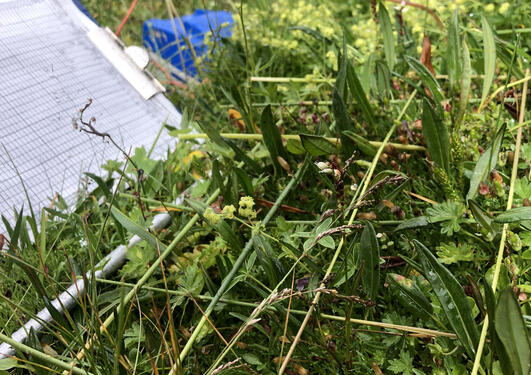NEMALearn
Florian Muthreich, Vigdis Vandvik

Hovedinnhold
NEMALearn - a tool to sort nematodes into feeding groups using Machine Learning
Nematodes are omnipresent in almost every ecosystem, even under harsh environmental conditions, and play an important role in soil processes, contributing to the provision of key ecosystem services such as nutrient cycling. Nematodes are responsible for 2.2% of global carbon emissions from the soil, meaning the impact of climate change on these organisms needs to be considered for future climate scenarios. Because nematodes are such an important part of natural ecosystems, the FUNDER project will focus on how their functional role, associated with their trophic position in the soil food-web, changes with climate. Nematode trophic classification is based on feeding groups. However, identifying and counting nematodes is time consuming, even if nematodes are identified to the family level. Finding efficient and automated tools for nematode identification will not only be faster, but also cheaper and potentially more precise, allowing us to process more samples, analyse more data and get a better understanding of the complex ecosystem processes we are studying. Machine learning, and specifically Convolutional Neural Networks (CNNs) that use internal hidden layers and convolutional layers, has proven to be very efficient for classifying images. A few recent studies have used CNNs for the identification of nematodes and the initial results are encouraging (Bogale et al. 2020; Thevenoux et al. 2021).
This MSc project will be conducted as part of the FUNDER project, where the MSc student will have responsibility to gather available datasets of nematode images and complete the dataset through the collection of new images of individuals using a microscope in order to train the model. The MSc student will classify these images from a newly constructed dataset into nematode feeding groups. Using previous CNN work on nematode recognition and online code, the MSc student will train a CNN with various parameters (size and number of neuron layers in the network) and find the best parameters to achieve maximum accuracy in classifying images. The MSc student will have the opportunity to participate in fieldwork (if desired). The trained CNN will be applied to the samples collected. The new images collected will form a new dataset that would be published, helping the global effort of identifying nematodes.
Research objectives
- Create a machine learning tool to identify nematodes at the feeding level: train a CNN and make the CNN available for future research
- Identify a large number of soil nematode samples collected in the summer fieldwork 2022 for the FUNDER project with the CNN
- While identifying, collect, classify and publish new images of nematodes depending on the feeding group, and make this image dataset available on GitHub and OSF (Centre for Open Science)
You will be part of a dynamic research team, gather experience in the scientific approach and have a cross-disciplinary approach for the development of promising identification techniques.
Tasks
- Labwork: collect images
- Programming work: build the CNN
- Participate to the fieldwork in August (optional)
- Data management, reproducibility, and Open Science practice
- Share your results: write a thesis which can be published as a scientific paper and present your work in national/international conferences
Candidate requirement
- Programming and machine-learning background
- Lab skills (microscope)
- Interest in ecology and soil organisms
- Scientific writing skills
- Team spirit
Practical information
- The project is funded through research grants
- Date: From May 2022 to March 2025
- Place of work: University of Bergen, Norway
- Supervisors: Florian Muthreich (post-doc at UiB who worked on pollen identification using CNN) and Vigdis Vandvik (leader of FUNDER)
- Further information: Between the Fjords
If you are interested send your CV and motivation letter to morgane.demeaux@uib.no.
References
Bogale, M., Baniya, A. & DiGennaro, P. (2020) Nematode identification techniques and recent advances. Plants 9: E1260. 10.3390/plants9101260.
Muthreich, F. (2021) New methods in palaeopalynology: classification of pollen through pollen chemistry. PhD Thesis, University of Bergen.
Thevenoux, R., Le, V.L., Villessèche, H., Buisson, A., Beurton-Aimar, M., Grenier, E., Folcher, L. & Parisey, N. (2021) Image based species identification of Globodera quarantine nematodes using computer vision and deep learning. Computers and Electronics in Agriculture 186: 106058. 10.1016/j.compag.2021.106058.


